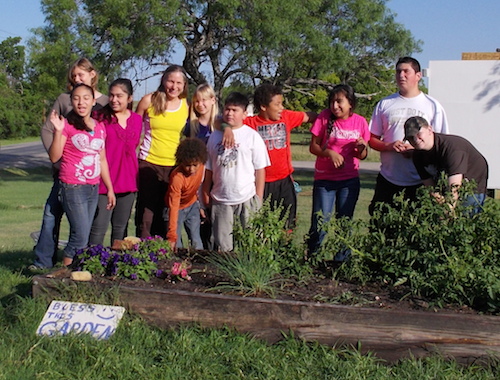Rita’s Story
“I looked into my children’s eyes and told them that we were like butterflies,” Rita said to me in her thick Cuban accent.
I was visiting Cuba to interview survivors. Rita had three small children when the ‘Special Period’ began.
All of the Cubans agreed that the name ‘Special Period’ was a complete joke. Governments always have a way of trying to make things sound better than they really are. The ‘Special Period’ was a very hard time. No amount of re-wording would hide the pain that was still in Rita’s heart.
Read more: Food Security – Could You Grow Your Own?
Economic Collapse in Cuba
When the last Soviet ship pulled out of Havana in 1991 there would be little fuel, medicine, or machine parts coming into the country for a long, long time.
But most importantly, there would be no more food.
When the USSR came apart, all of the trading partners like Cuba were suddenly cut off.
The lights went out, the buses stopped running, and the average Cuban lost 20 pounds.
Cuba, like most nations on Earth, had sacrificed all of it’s local food production in favor of big commercial agriculture. Those systems which had proven so successful for so many years had a major vulnerability to the whims of world politics.
And the Cuban’s never recognized it.
Until it was too late.
Read more: Are You Prepared for Peak Chicken?
Hungry Children and Hard Times
Rita continued, “I told my kids. Do you know how you are like a butterfly? You know at first a butterfly is a caterpillar. And then it makes a cocoon. And for a long time it lives in its cocoon – and while it is in there it doesn’t eat anything. It stays in there a long time, but eventually it comes out and eats again. Right now, we are like butterflies in our cocoons and we aren’t eating. But someday soon we will come out and be beautiful butterflies.” She wiped her eyes with the sleeve of her shirt at the memory.
“I just didn’t realize how long it would be,” Rita finally said.
Rita was a very resourceful woman, and they did make it through those hard times.
Learning to Grow Food in an Emergency
She told me of how they dug up yards and corner lots – balconies and rooftops. Everywhere they could, the people started growing food. She told me how the lowly gardeners and landscapers suddenly became the most important members of the community.
She told me stories of how people got so sick from the lack of nutrients. How badly everyone smelled from the lack of water to clean themselves. And how people’s skin turned gray and cracked when there were no oils or fats to eat.
Rita lowered her head and said that people were even raising livestock inside their tiny homes and apartments. They would put chickens or pigs in a bathroom or closet and feed them whatever greens or foods they could find.
They felt lucky to have a pig or a chicken.
Food Trumps All Needs
There were hardships with transportation. Equipment and machinery that needed fuel was now useless.
In Cuba, there was not a lot of violence – except for the unspoken violence against oneself. Depression and ultimately suicide increased.
But the biggest thing that all the survivors I interviewed spoke about was the hunger.
The lack of food.
The Promise of a Food Garden
Rita suddenly snapped back into the present and smiled. There was now as much food as you needed. Rita shifted her hefty weight and tossed her head back. “Ha, yes, I love to eat and I keep some extra with me at all times,” she laughed, acknowledging her large size. “And I still have a garden.”
Rita was very grateful for the package of hand tools I had brought as a gift. And I have been very grateful to know her and share her story.
It’s one of the most important reasons why I spend my time encouraging others to start growing their own food.
Marjory Wildcraft is an Expedition Leader and Bioneer Blogger with The [Grow] Network, which is an online community that recognizes the wisdom of “homegrown food on every table.” Marjory has been featured as an expert on sustainable living by National Geographic, she is a speaker at Mother Earth News fairs, and is a returning guest on Coast to Coast AM. She is an author of several books, but is best known for her “Grow Your Own Groceries” video series, which is used by more than 300,000 homesteaders, survivalists, universities, and missionary organizations around the world.









COMMENTS(0)
I enjoyed reading this very much. It is always interesting to learn about innovative ways food is grown, caught, or hunted in other areas of the world. Please write more on innovative ways people grow or find food in impoverished areas. Thanks so much, Marjory.
Thank you for sharing Rita’s testimony regarding her struggle with food shortage.
I am of Spanish Caribbean descent more specifically Puerto Rico and your interview reminded me of the many people on the island who depend on transfer payment. I said to myself my God there is nothing different from the Cuban people experience from the 1990s to what is about to happen in Puerto Rico. Majority of the food is imported and very little if not none is grown. I personally wanted to thank you for the research and outreach you and the team is conducting everyday.
Your research definitely help reduce if not eliminate much wasted time with learning through trail and errors in sustainable living.
My daughter turned 1 year old today and I found this story touching. Thank you for sharing. I am also a backyard food grower. My favorite thing to do is to grow food trees. Long term I think fruit/nut trees + canning is a simple but effective solution for independent food supply. Cuba is awesome for having dealt with all the hardships that have come their way. I hope to visit there one day. Keep up the good work! 🙂
Inspiring words! Thank you Marjory, always enjoy your contributions, especially your video clips, they ooze energy!
By the way, what happened to the little “Reply” button???? it used to be kind of into the last line of comment text, now I cannot find it at all; can some one fix that?